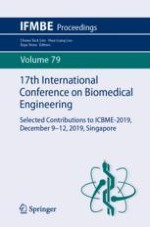This book gathers contributions presented at the 17th International Conference on Biomedical Engineering, held on December 9-12, 2019, in Singapore. It continues the tradition of the previous conference proceedings, thus reporting on both fundamental and applied research. It includes a set of carefully selected chapters reporting on new models and algorithms and their applications in medical diagnosis or therapy. It also discusses advances in tele-health and assistive technologies, as well as applications of nanotechnologies. Organized jointly by the Department of Biomedical Engineering of the National University of Singapore and the Biomedical Engineering Society (Singapore), this book offers a timely snapshot of innovative research and technologies and a source of inspiration for future developments and collaborations in the field of biomedical engineering.
